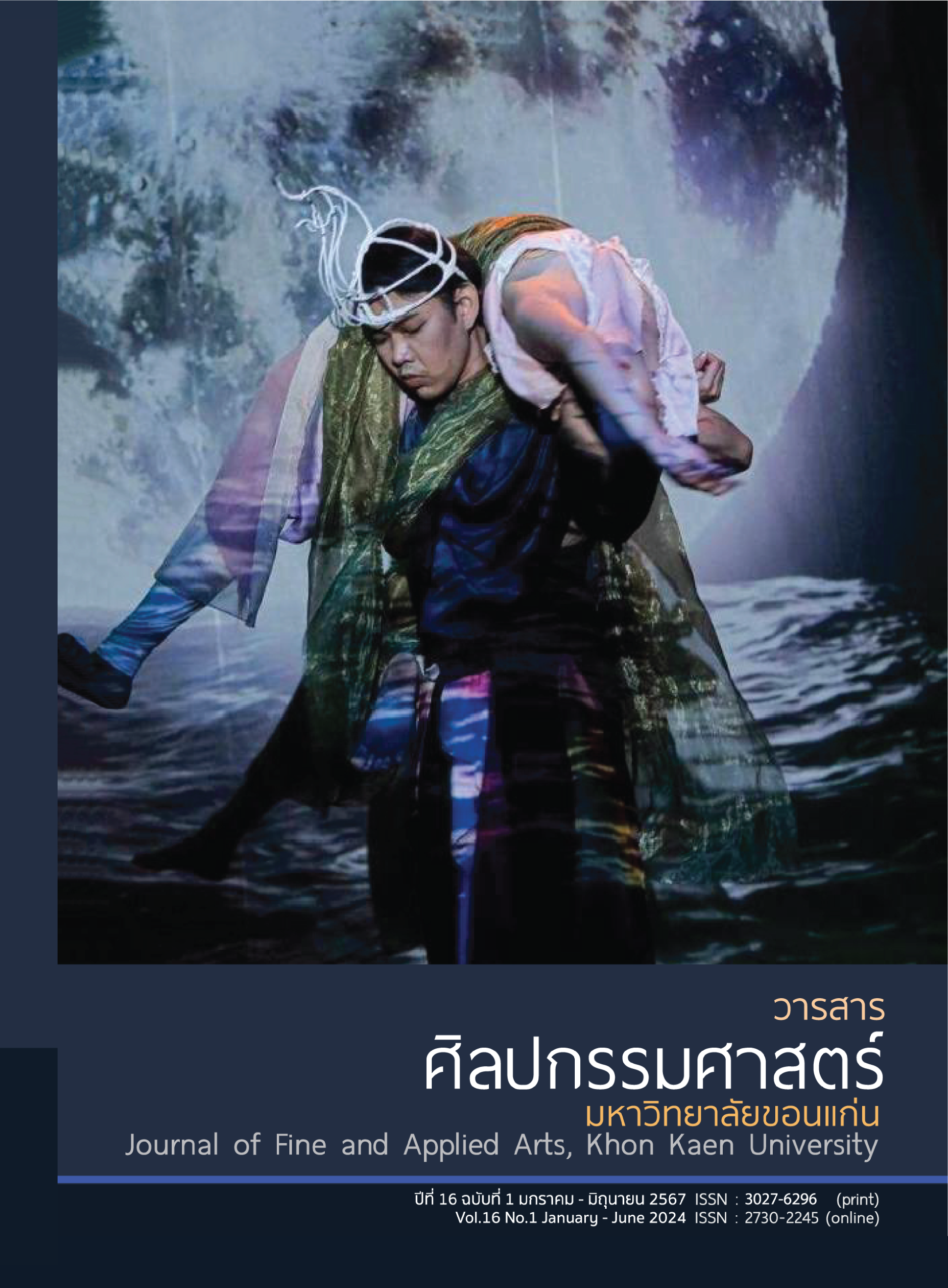Clarinet Solo Techniques for Thai Traditional Music: A Case Study Of SM1, Worawut Khamchuanchuen
Main Article Content
Abstract
The objective of this research includes 1) studying clarinet solo techniques for Thai traditional music and 2) the differences between clarinet solo techniques for Thai traditional and western music. The research tool for gathering the data of “Clarinet Solo Techniques for Thai Traditional Music: A Case Study of SM1, Worawut Khamchuanchuen” is an interview about clarinet solo for Thai traditional music. The type of an interview used in the study is informal in-depth interview for flexibility of the answers and the comfort of an interviewee. The data is analyzed from interview sound recording.
The result of the study expresses that the techniques for both types of music are similar but they have different terms to describe them. For Thai traditional music, there are seven familiar techniques including (1) “Sador” (2) “Rabai Lom” (3) “Sabad” (4) “Aeun” (5) “Prome Niew”
(6) “Khayee” and (7) “Hon Seang”. Additionally, there are two important concepts of clarinet solo for Thai traditional music. Firstly, imitation, the process by which a melody is repeated in simultaneously sounding melodic lines so as to preserve the prototype of music. It is similar to transcribing music. And lastly, learning music pieces. The musician should learn music pieces with an expert so that the melody can be transcribed correctly. However, clarinet solo for Thai traditional music is not widely recognized in Thai society due to individuals’ personal preference in music.
Article Details

This work is licensed under a Creative Commons Attribution-NonCommercial-NoDerivatives 4.0 International License.
Content and information in articles published in the Journal of Fine and Applied Arts of Khon Kaen University is regarded as the opinion and sole responsibility of the author(s) directly; therefore, editors are not obliged to agree to or share any responsibility with regard to the content and information that appears within these articles.
All articles, information, content, image, etc. that have been published in the Journal of Fine and Applied Arts of Khon Kaen University is the copyright of the Journal of Fine and Appllied Arts of Khon Kaen University. Any person or organization who wishes to distribute all or parts of the articles for further dissemination or other usage must first receive permission from the Journal of Fine and Applied Arts of Khon Kaen University before proceeding to do so.
References
กวินนาฏ ผินกลาง, ทินกร อัตไพบูลย์, และพิทยวัฒน์ พันธะศร. (2558). กระบวนการเรียนรู้เพลงไทยในรูปแบบการบรรเลงเดี่ยวปี่คลาริเน็ต ของศิลปินแห่งชาติ: กรณีศึกษาพันโทวิชิต โห้ไทย. รมยสาร, 13(3), 79-88.
ณัชชา โสคติยานุรักษ์. (2550). ดนตรีคลาสสิก: ศัพท์สำคัญ. กรุงเทพฯ : สำนักพิมพ์แห่งจุฬาลงกรณ์มหาวิทยาลัย.
ทัพพสาร เพ็งสงค์, และพรประพิตร์ เผ่าสวัสดิ์. (2559). กลวิธีการเดี่ยวปี่คลาริเน็ตบีแฟลตเพลงเชิดนอกของ
พันโทวิชิต โห้ไทย. วารสารศิลปกรรมศาสตร์ จุฬาลงกรณ์มหาวิทยาลัย, 2(2), 122-127.
ประพันธ์ศักดิ์ พุ่มอินทร์. (2557). ทฤษฎีการสอนดนตรี. ค้นเมื่อ 11 มีนาคม 2564, จาก http://www.playmusic.co.th/images/filestorage/2555_06_1/_Suzuki.pdf
เวนิสา เสนีวงศ์ฯ. (2555). แปดเจ้าฟ้าแห่งสยาม. กรุงเทพฯ : บางกอกบุ๊ค.
อานันท์ นาคคง. (2556). การศึกษาวงดนตรีไทยร่วมสมัยและผลงานดนตรีไทยร่วมสมัยในสังคมไทยปัจจุบัน: รายงานวิจัย. กรุงเทพฯ : สำนักงานศิลปวัฒนธรรมร่วมสมัย.
อุทัย ศาสตรา. (2561). การสร้างสรรค์ดนตรีไทย: แนวคิดและแนวทางการเรียนการสอน. วารสารครุศาสตร์ จุฬาลงกรณ์มหาวิทยาลัย, 46(4), 554-569.
Giammanco, G. (1978). The historical and technical development of clarinet transposition. Retrieve March 11, 2021, from https://repository.lsu.edu/cgi/viewcontent.cgi?article=4202& context=gradschool_disstheses


